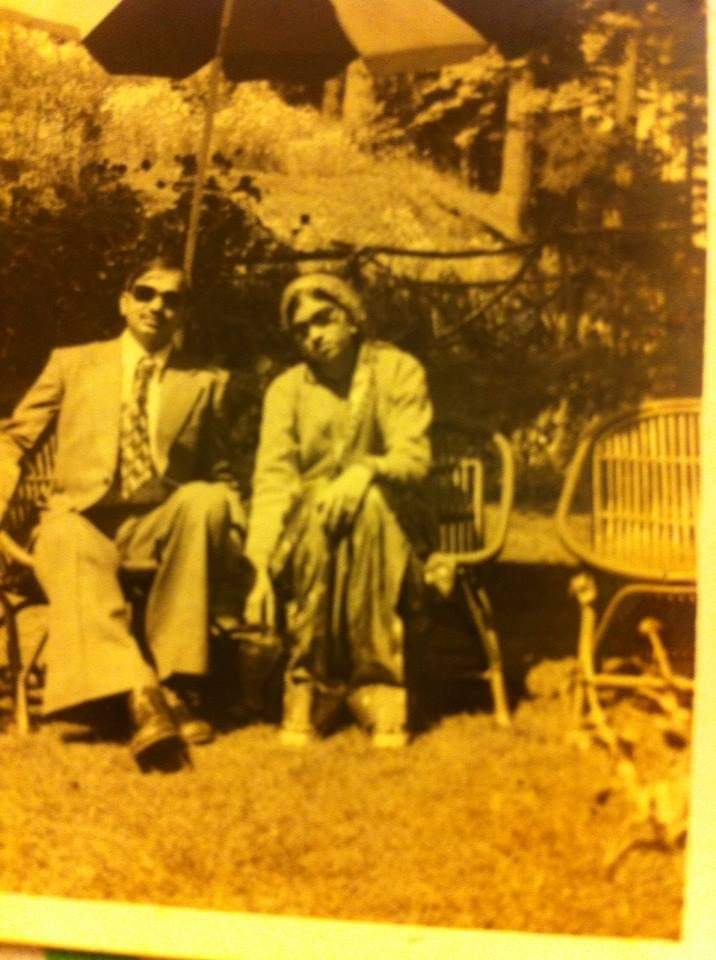Whatever artistic talents I might possess, I owe to my mother. I spent a lot of time in the kitchen watching her cook while I was growing up, and I noticed that whenever she made French fries, she would lay them out on a brown paper bag to soak up the oil before putting them on our plates. One night, she ran out of bags, and had to put the fries on an ordinary piece of white paper. When we were done eating, and it was time to clean up, I picked up the paper and realized that I could almost see through it. It was saturated with oil, and nearly transparent, so I asked my mother if I could keep it. She seemed puzzled by my request, but the wheels were turning, and I had something in mind that I wanted to try out. I put the paper on a piece of cardboard, and waited a few days for it to dry before I was satisfied that my plan would work. I tore out a page from one of my favorite comic books, taped it to the window in my room, and covered it with the oiled paper. By tracing the image that showed through, I created a credible picture, and was hooked on learning to draw.
After that, I tried several other “mediums,” including an unsuccessful attempt to trace something on waxed paper, and discovered that on a bright sunny day, even plain typing paper was transparent enough for light to pass through it without having to be soaked in oil first. I began turning out replicas of my favorite cartoon characters, and copied ads from old magazines and newspapers, but it was not long before I became dissatisfied with that approach. The drawings were not original, and what I really wanted to do was to “make things” on my own.
Those were the years before we got our first television. If you remember television in the 50’s, you will remember the name, Jon Gnagy. Jon is famous for his Saturday morning “Learn to Draw” program, but there is something else that he was famous for that not many people know about: he was the opening act of the very first show ever broadcast on commercial television. His program, or what would become his program, was broadcast live from the Empire State Building on May 14, 1946. The show was called “Radio City Matinee,” and after being introduced by the host, Warren Hull, Jon began with his trademark promise, “Hello friends, this is Jon Gnagy to prove to you that you can learn to draw….” He proceeded to do a quick sketch of an old oak tree, and explained each step as he went along, with just enough time to add a few birds perched in the branches before his time was up. He was on air for a total of seven minutes, with a viewing audience of no more than 200 people, but it was the start of what would become a weekly television event for millions of families across the country, including ours.
The show became part of the regular lineup on NBC. To coincide with his art lessons, Jon had developed a “Learn to Draw” set that could be ordered by viewers as a mail-order item, or purchased in a few stores around the New York City area. I think that is where my parents bought mine.
My mother and father seemed to enjoy my interest in art, and always encouraged me to do more of it, but they surprised me with the Learn to Draw set. In our family, presents were usually reserved for birthdays, or Christmas, but one Saturday morning, before Jon’s show, my father brought it into the kitchen and handed it to me just as I was finishing my breakfast. My mother was at the stove, and the two of them said something about how it might help me to be a better artist, but I was too overwhelmed to respond. I rushed into the living room, sat down on the floor in front of the tv, and quickly sorted through everything in the box. What I remember most of all was the small pad of sandpaper sheets used for sharpening pencils. It was maybe six inches long, and not much wider than a ruler, but I sharpened and re-sharpened every pencil in the set by running the tips back and forth across the pad, until the top sheet was so covered with ground lead that I had to tear it off even before my first drawing. I wondered why I had not thought of that simple trick myself. My father had plenty of sandpaper in his shop in the basement.
That morning, the show began in the usual way. A black chalkboard with four shapes appeared on the screen, with Jon’s voice in the background. “If you can draw these simple forms, the ball, cone, cube, and cylinder,” he said, “you can learn to draw a real picture the very first time you try…” The only difference this time was that I had the Learn to Draw set all laid out in front of me, and was ready to do my first Jon Gnagy drawing, without having to trace anything again. Thanks to the magic of television, I would be able to learn the basic techniques of drawing from tv’s very first art teacher.
Jon never received money for his show. Instead, he collected royalties from the sale of his art sets, and established a unique marketing strategy that has since been copied by countless other programs. He had a talent for art, as well as for business, and after a quick search on Google, I was not surprised to find that the sets are still available for anyone who wants to learn to draw. Sandpaper pad included.
Submitted by Anonymous
Appreciation
Pass It On®












